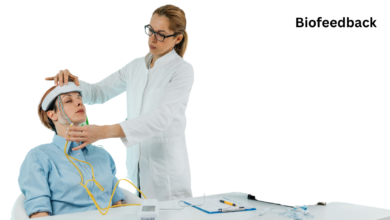MRI:Provides more detailed images of the pelvic organs, especially for complex cases.
MRI of the Pelvis: A Detailed Look

What is MRI?
MRI (Magnetic Resonance Imaging) is a non-invasive imaging test that uses a magnetic field and radio waves to create detailed images of organs, tissues, and bones inside the body.
Here’s how it works:
- Magnetic Field: You are placed inside a large, cylindrical magnet.
- Radio Waves: Radiofrequency pulses are sent into your body.
- Image Creation: The machine detects the signals from your body and uses them to create images on a computer screen.
MRI can be used for a variety of purposes, including:
- Brain and spinal cord: To diagnose conditions such as tumors, strokes, multiple sclerosis, and infections.
- Heart: To evaluate heart function and structure.
- Joints: To diagnose conditions such as arthritis, ligament tears, and cartilage damage.
- Abdomen: To examine organs such as the liver, pancreas, kidneys, and spleen.
- Blood vessels: To detect blockages or narrowing of arteries.
MRI is a safe procedure that does not involve radiation. However, it is not suitable for people with certain metal implants or pacemakers.
If you have any questions about MRI or whether it is right for you, please talk to your doctor.
Why MRI is required?
MRI (Magnetic Resonance Imaging) is required for many reasons, depending on the specific medical situation. Here are some common scenarios:
Brain and spinal cord:
- To diagnose tumors, strokes, multiple sclerosis, infections, and other neurological conditions.
- To evaluate the effectiveness of treatments for brain and spinal cord disorders.
Heart:
- To assess heart function and structure, especially in cases of heart disease or congenital heart defects.
- To evaluate the effectiveness of heart treatments.
Joints:
- To diagnose arthritis, ligament tears, cartilage damage, and other joint problems.
- To assess the effectiveness of treatments for joint disorders.
Abdomen:
- To examine organs such as the liver, pancreas, kidneys, and spleen for abnormalities, tumors, or infections.
- To monitor the progression of liver or kidney diseases.
Blood vessels:
- To detect blockages or narrowing of arteries, which can lead to heart attacks or strokes.
- To evaluate the effectiveness of treatments for blood vessel diseases.
Other reasons:
- To guide procedures like biopsies or surgeries.
- To monitor the progress of certain medical treatments.
- To detect and diagnose various other medical conditions.
In general, MRI is a valuable tool for medical diagnosis and monitoring. It’s a non-invasive procedure that can provide detailed information about the body’s internal structures.
.which are the method of MRI?
MRI (Magnetic Resonance Imaging) uses a combination of magnetic fields and radio waves to create detailed images of the body’s internal structures. Here’s a breakdown of the method:
- Magnetic Field:
- Strong Magnet: You are placed inside a large, cylindrical magnet that generates a strong magnetic field.
- Alignment: The magnetic field causes the protons in your body’s atoms to align in a specific direction.
- Radio Waves:
- Radiofrequency Pulses: Radiofrequency pulses are sent into your body. These pulses disrupt the alignment of the protons.
- Signal Detection:
- Relaxation: As the protons realign, they emit signals that are detected by the MRI machine.
- Image Creation: The machine’s computer processes these signals to create images.
- Image Analysis:
- Detailed Images: The images provide detailed information about the structure and function of different tissues and organs.
- Cross-Sectional Views: MRI can create images in different planes (axial, sagittal, coronal), allowing for detailed examination from various angles.
Types of MRI:
- Conventional MRI: The most common type, providing detailed images of the body’s tissues and organs.
- Functional MRI (fMRI): Measures brain activity by detecting changes in blood flow.
- Diffusion Tensor Imaging (DTI): Measures the movement of water molecules in the brain to assess nerve fiber pathways.
- Perfusion MRI: Measures blood flow to specific areas of the body.
Preparation for an MRI:
- Remove Metal Objects: You will need to remove any metal objects, such as jewelry, piercings, or hair clips, before the test.
- Inform Your Doctor: If you have any metal implants, such as pacemakers or artificial joints, inform your doctor before the test.
- Noise Reduction: You may be given earplugs to protect your ears from the noise generated by the MRI machine.
MRI is a safe and painless procedure that does not involve radiation. It’s a valuable tool for diagnosing and monitoring a variety of medical conditions.
.who should go MRI test ?
Many people may benefit from an MRI (Magnetic Resonance Imaging), depending on their medical history, symptoms, or concerns. Here are some common groups who might undergo MRI:
Brain and spinal cord: Individuals with symptoms such as headaches, dizziness, weakness, numbness, or changes in vision. Those with a history of head injuries, strokes, or neurological disorders.
Heart: People with known or suspected heart problems, such as heart disease, congenital heart defects, or arrhythmias.
Joints: Individuals with joint pain, swelling, or limited range of motion. Those with a history of injuries or arthritis.
Abdomen: People with abdominal pain, bloating, or changes in bowel habits. Those with a history of liver, kidney, or pancreatic disease.
Blood vessels: Individuals with a history of heart attacks, strokes, or peripheral artery disease. Those at risk for blood vessel problems.
Other reasons: People undergoing medical procedures, such as biopsies or surgeries. Those monitoring the progress of certain medical treatments.
If you have any concerns about your health, it’s best to consult with your doctor to determine if an MRI is appropriate for you.
What are the results of MRI?
MRI results can provide valuable information about various conditions, including:
- Brain and spinal cord: Tumors, strokes, infections, multiple sclerosis, and other neurological disorders.
- Musculoskeletal system: Injuries, arthritis, infections, and tumors.
- Cardiovascular system: Heart abnormalities, blood vessel abnormalities, and aneurysms.
- Abdomen and pelvis: Liver, kidney, pancreatic, and ovarian diseases, as well as pregnancy and fetal development.
- Breast: Breast cancer and other breast abnormalities.
What are the components of this test ?
Components of an MRI
An MRI machine consists of several key components:
- Magnetic field: A powerful magnetic field is generated by the machine, aligning the protons in your body.
- Radiofrequency coils: These coils transmit and receive radio waves, which interact with the aligned protons.
- Gradient coils: These coils create variations in the magnetic field, allowing the machine to pinpoint the source of the signal.
- Computer: The computer processes the signals from the coils to create images.





